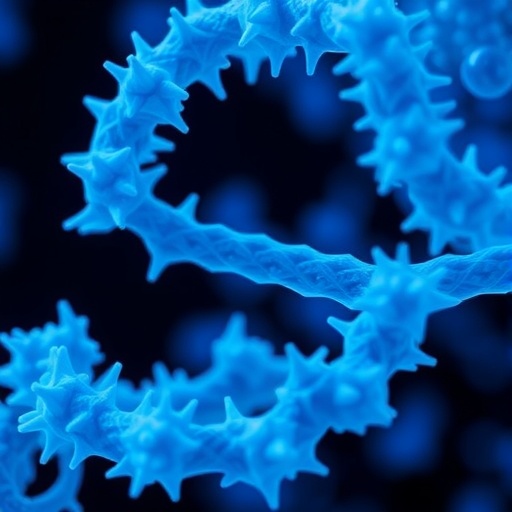In an enthralling advancement in the realm of proteomics, researchers have introduced a revolutionary search algorithm aimed at enhancing proteoform identification. This groundbreaking approach focuses on computing the largest-size error-correction alignments between protein mass graphs and spectrum mass graphs. Proteoform identification is a pivotal area of study as it directly influences our understanding of protein functions and interactions in biological systems. Accurate identification of proteoforms is essential for uncovering the complexities of cellular processes, disease mechanisms, and potential therapeutic targets.
The newly proposed algorithm adopts a two-fold strategy. Initially, a filtering algorithm is deployed to streamline the candidate identification process. By filtering irrelevant data from protein mass graphs, researchers can effectively narrow down their search parameters, enhancing the quality and speed of the subsequent alignment process. Following this filtering step, the algorithm applies a cutting-edge search methodology to report the final results with remarkable precision. This dual approach not only boosts performance but also ensures that the accuracy of identifications remains uncompromised.
An impressive feature of this algorithm is its superior speed. When benchmarked against popular existing methods such as TopMG and TopPIC, this new method is found to be 3.9 to 9.0 times faster. Speed is a crucial factor in the analysis of large datasets which are common in proteomic studies, and the ability to deliver results in significantly less time has the potential to transform how researchers engage with mass spectrometry data. Faster algorithms allow scientists to conduct more extensive explorations and achieve deeper insights into the proteomic landscape.
In addition to improving speed and efficiency, the new algorithm’s capability to expedite the running time of established methods like sTopMG while maintaining search accuracy is noteworthy. By optimizing the computational process without sacrificing the precision of results, this method offers a robust solution for researchers who require efficiency without compromise. The integration of speed and reliability positions this algorithm as a frontrunner in the field of proteomics.
To bolster the empirical evaluation of this method, the research team developed a comprehensive pipeline dedicated to generating simulated top-down spectra from input protein sequences that include various modifications. This innovation allows for a controlled testing environment where the efficacy of the search algorithm can be rigorously assessed. By using these simulated datasets, researchers were able to benchmark the performance of their new algorithm under different scenarios, providing substantial evidence of its capabilities.
The experimental findings indicate that the new combined method achieves an astonishing accuracy rate of 95% on simulated datasets. This level of precision surpasses existing methodologies, asserting the algorithm’s effectiveness in real-world applications. The historical challenge of accurately identifying proteoforms has been a significant barrier in proteomics, but with these advancements, the researchers are poised to make substantial contributions to the field.
Furthermore, the effectiveness of the new algorithm holds true when applied to real annotated datasets. In rigorous tests, the combined method demonstrated an impressive accuracy of ≥97.1% when using the deconvolution method known as FLASHDeconv. This level of performance is a testament to the robustness of the algorithm and its potential to be adapted for various applications in proteomics research.
As proteomics continues to evolve with the integration of innovative computational methods, this new search algorithm stands out as a beacon of progress. The implications of enhanced proteoform identification extend beyond academic realms; they hold significant promise for clinical applications, including disease diagnostics and personalized medicine. By improving our understanding of protein variations and modifications, researchers can develop targeted therapies that cater specifically to individual patient profiles.
In summary, the introduction of this search algorithm offers a transformative approach to proteoform identification, addressing long-standing challenges within the field of proteomics. With its impressive speed, accuracy, and practical applicability, this method stands to redefine how researchers analyze and interpret mass spectrometry data. The future of proteomic analysis looks brighter than ever, with possibilities for innovation, discovery, and clinical translation on the horizon.
As more researchers adopt this promising algorithm, we anticipate a paradigm shift in the way proteomic data is managed and utilized. The landscape of biomolecular research is set to witness a significant makeover as these technological advancements become more widely accessible, paving the way for groundbreaking discoveries in the science of life itself. This is not just a step forward in computation; it represents a leap toward comprehensive understanding and manipulation of the molecular machinery that underpins biological existence.
With coordinated efforts from researchers, software developers, and computational biologists, the journey toward a more nuanced understanding of the proteome continues. This new search algorithm is a testament to what collaborative scientific endeavors can achieve, holding the promise of unlocking the mysteries of life at a molecular level.
Subject of Research: Proteoform identification through algorithm development for mass spectrometry analysis.
Article Title: Proteoform search from protein database with top-down mass spectra.
Article References:
Li, K., Shan, B., Xin, L. et al. Proteoform search from protein database with top-down mass spectra. Nat Comput Sci (2025). https://doi.org/10.1038/s43588-025-00880-z
Image Credits: AI Generated
DOI: 10.1038/s43588-025-00880-z
Keywords: proteomics, proteoform identification, mass spectrometry, search algorithm, computational biology, accuracy, speed, FLASHDeconv, top-down spectra, protein mass graphs.
Tags: algorithm for proteomicscomputational methods in biologyenhancing protein function understandingerror-correction in mass spectrometryfiltering algorithms in proteomicsprecision in proteoform discoveryprotein mass graph analysisproteoform identification techniquesproteomics and disease mechanismsspeed improvements in mass spectrometrytherapeutic targets in proteomicstop-down mass spectrometry advancements





